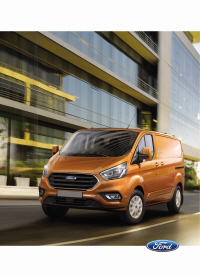This view of the Owner's Manual contains the very latest information, which may vary slightly from the printed Owner's Manual originally provided with your vehicle. It may also describe content that is not on or operates differently on your vehicle. Please consider the Owner's Manual originally provided with your vehicle as the primary source of information for your vehicle.

The information contained in this publication was correct at the time of release.In the interest of continuous development, we reserve the right to change specifications, design or equipment at any time without notice or obligation.No part of this publication may be reproduced, transmitted, stored in a retrieval system or translated into any language in any form by any means without our written permission.Errors and omissions excepted.
Copyright © 2024 Ford Motor Company
Cleaning the Exterior
Wash your vehicle regularly with cool or lukewarm water and a neutral pH shampoo.
- Never use strong household detergents or soap, for example dish washing or laundry liquid. These products can discolor and spot painted surfaces.
- Never wash your vehicle when it is hot to the touch, or during strong or direct sunlight.
- Dry your vehicle with a chamois or soft terry cloth towel to eliminate water spotting.
- Immediately remove fuel spillages, bird droppings, insect deposits and road tar. These may cause damage to your vehicle’s paintwork or trim over time.
- Remove any exterior accessories, for example antennas, before entering a car wash.
- When filling with AdBlue®, remove any residue on painted surfaces immediately.
Note:
Suntan lotions and insect repellents can damage painted surfaces. If these substances come in contact with your vehicle, wash the affected area as soon as possible.
Note:
If you use a car wash with a waxing cycle, make sure that you remove the wax from the windshield and the wiper blades.
Note:
Before using a car wash, check that it is suitable for your vehicle.
Note:
Some car washes use water at high pressure.Due to this, water droplets may enter inside your vehicle and could also damage certain parts of your vehicle.
Note:
Remove the antenna before using an automatic car wash.
Note:
Switch the blower motor off to prevent contamination of the cabin air filter.
We recommend that you wash your vehicle with a sponge and lukewarm water containing a car shampoo.
Cleaning the Exterior Precautions
Immediately remove fuel spillages, AdBlue residuals, bird droppings, insect deposits and road tar. These may cause damage to your vehicle’s paintwork or trim over time.
Remove any exterior accessories, for example antennas, before entering a car wash.
Cleaning the Headlamps
Note:
Do not scrape the headlamps.
Note:
Do not use abrasives, alcoholic solvents or chemical solvents to clean the headlamps.
Note:
Do not wipe the headlamps when they are dry.
Cleaning the Rear Window
Note:
Do not scrape the inside of the rear window
Note:
Do not use abrasives, alcoholic solvents or chemical solvents to clean the inside of the rear window.
Clean the inside of the rear window with a soft, lint-free cloth and non-abrasive cleaner.
Cleaning the Chrome Trim (If Equipped)
Note:
Do not use abrasives or chemical solvents. Use soapy water.
Note:
Do not apply cleaning product to hot surfaces and do not leave cleaning product on chrome surfaces for a period of time exceeding that which is recommended.
Note:
Industrial-strength (heavy-duty) cleaners, or cleaning chemicals, may cause damage over a period of time.
Cleaning Stripes or Graphics (If Equipped)
Hand washing your vehicle is preferred however, pressure washing may be used under the following conditions:
- Do not use water pressure higher than 14,000 kPa.
- Do not use water hotter than 82 °C.
- Use a spray with a 40 ° wide spray angle pattern.
- Keep the nozzle at a 305 mm distance and 90 ° angle to your vehicle's surface.
Note:
Holding the pressure washer nozzle at an angle to the vehicle's surface may damage graphics and cause the edges to peel away from the vehicle's surface.
BodyPaintwork Preservation
Frequently remove particles such as bird droppings, tree sap, insect deposits, tar spots, road salt and industrial fallout to avoid paint surface damage.
Frequently wash the underbody of your vehicle if salt is applied on the road.
We recommend that you wax the paintwork once or twice a year.
Note:
Do not apply polish in strong sunlight as this dries the polish too quickly.
Note:
Do not allow polish to come in contact with unpainted plastic surfaces as it could be difficult to remove.
Note:
Do not apply polish to the windshield or rear window.A contaminated windshield or contaminated wiper blades may lead to increased wiper noise, reduced wipe quality or reduced rain sensor performance.
- Please note that Ford will not respond to individual feedback.
- Please provide detailed feedback regarding any inaccuracies in the content or any missing content in the Owner's Manual.
- Your feedback will be investigated, and any necessary changes will be updated in the online Owner's Manual.
Your input is valuable in helping us improve our Owner's Manual. Thank you for taking the time to provide your feedback.
